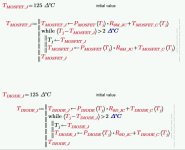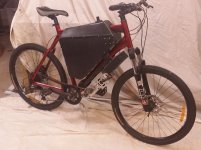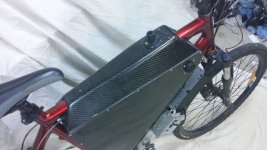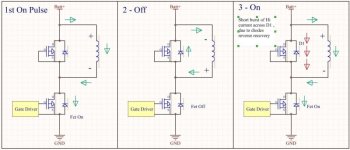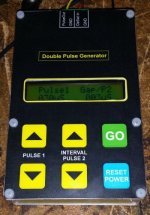SjwNz
100 W
Well, I did some tests with results which probable wont surprise anyone as I pretty much know this was going to happen but still wanted to see.
So at 150amps phase @15KHz PWM the controller would cut out all the time with the smallest amounts of throttle.
I tried to increased Desat to 300amps but I ended up getting 400amps.(I can fix that later)
Controller run good again, but now I knew there was some high current spikes going on which was not good.
I set the Desat current back to 240amps and increased PWM to 30KHz
(Thats as hi as I wanted to go without looking at gate signals, switching times and loads on the gate components. )
It would still trip desat but not as bad and I could ride the bike where as at 15khz it was unride-able.
So now I was a little worried about switching losses and fets getting hot, so I glued a temperature sensor to one of the High side fets (Hiside doing all the PWM switching)
Switch back to 15KHz and rode up a short but steep hill and checked the temp, 57°C.
30KHz and same hill = 75°C
I will stick with 25 to 30KHz and fit a new temp sensor to a fet and the PIC can back off the throttle if fets get to hot, I also need to make a better heatsink
as all I am using is the diecast box which is only 3mm thick and no cooling fins.
Looks like I may have to make a small Dyno so I can do some better tests and get measurements to make sure every is working ok.
So, the controller is now at 150amps Phase and 70amps Avg battery and its just a heat issue stopping me from holding the controller at that level for longer than 1 to 2mins,
which is fine as I am only riding around 1kw most of the time anyway.
I think I may have to increase battery voltage to 50volts soon and then my 2kw controller will be 3kws, happy days.
So at 150amps phase @15KHz PWM the controller would cut out all the time with the smallest amounts of throttle.
I tried to increased Desat to 300amps but I ended up getting 400amps.(I can fix that later)
Controller run good again, but now I knew there was some high current spikes going on which was not good.
I set the Desat current back to 240amps and increased PWM to 30KHz
(Thats as hi as I wanted to go without looking at gate signals, switching times and loads on the gate components. )
It would still trip desat but not as bad and I could ride the bike where as at 15khz it was unride-able.
So now I was a little worried about switching losses and fets getting hot, so I glued a temperature sensor to one of the High side fets (Hiside doing all the PWM switching)
Switch back to 15KHz and rode up a short but steep hill and checked the temp, 57°C.
30KHz and same hill = 75°C
I will stick with 25 to 30KHz and fit a new temp sensor to a fet and the PIC can back off the throttle if fets get to hot, I also need to make a better heatsink
as all I am using is the diecast box which is only 3mm thick and no cooling fins.
Looks like I may have to make a small Dyno so I can do some better tests and get measurements to make sure every is working ok.
So, the controller is now at 150amps Phase and 70amps Avg battery and its just a heat issue stopping me from holding the controller at that level for longer than 1 to 2mins,
which is fine as I am only riding around 1kw most of the time anyway.
I think I may have to increase battery voltage to 50volts soon and then my 2kw controller will be 3kws, happy days.


